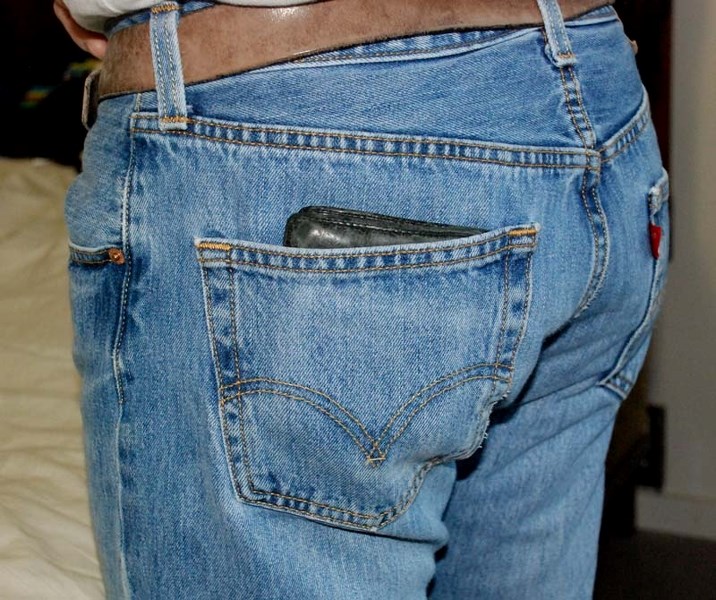A brick-of-a-wallet being lugged around in your back pocket may be the cause of the shooting pain in your legs and buttocks.
An overstuffed George Costanza-sized wallet bulging out of your back pocket can be a serious issue, not just a Seinfeld comedy routine, says James Dean, physiotherapist and owner of Active Physio Works (formerly St. Albert Physical Therapy & Sports Injury Clinic).
A back-pocket wallet can trigger piriformis syndrome, also known as “fat wallet syndrome” or “wallet sciatica.”
“If you’re sitting on a wallet, you’re sitting unevenly and it actually compresses one side of your back,” says Dean.
An obese wallet can cause pain in two ways, he explains. It can compress the piriformis muscle – a muscle deep in the buttock behind the gluteus maximus, which functions to externally rotate your hip when walking.
That in turn can irritate the sciatic nerve. Its branches travel either above, below, or right through the piriformus (varying for each person) from the lower back through the hips and buttocks and down each leg.
A back pocket wallet may also compress several of the sciatic nerve roots exiting the lower back, resulting in pain down the back of the thigh, calf and foot, pain when walking up stairs or incline or reduced range of motion of the hip joint.
One-way to avoid wallet sciatica is to stretch the piriformis muscle by using a foam roller, for example, says Dean.
“By stretching out and loosening the piriformis, you’ve got a pretty good shot of giving that sciatic nerve a little more room to breath. It’s not being strangled, so to speak, by that tight piriformis muscle.”
To avoid Piriformis Syndrome, Dean recommends carrying your wallet in your front pocket or a bag.
Back pain, fat wallet-induced or not, is often brought on by sedentary behaviour, he says. Sciatic nerve pain is common among physiotherapy clients.
Pelvic rocks – moving back-and-forth while sitting – can help trick your body into thinking it’s moving.
“Our backs love movement. A seated position is what most of us spend most of our day in and our bodies weren’t designed for it.”
“You can do (pelvic rocks) so your upper body doesn’t move at all. You can be sitting in a board meeting and nobody will know you’re doing anything,” he says.
Dean also recommends overall muscle strengthening to prevent back pain.
“Take pressure off of your spine by having a stronger core (transversus abdominis and multifidus muscles) and continue to progress in your cardio program,” he says.
Stretch it out
“Figure 4” stretch: While sitting, place the ankle of the side of the body that is in pain over the opposite knee and push the painful leg down towards the floor. This will stretch the buttocks and the piriformis muscle. To deepen the stretch, pull your upper body towards your calf. Remember to keep your back straight.<br /><br />“Leg hang” stretch: Lie on the side of your body that is painful. Straighten your bottom leg and hang your top leg over a couch or bed. You will feel a twisting in your bottom leg. This will open up your lower back.




